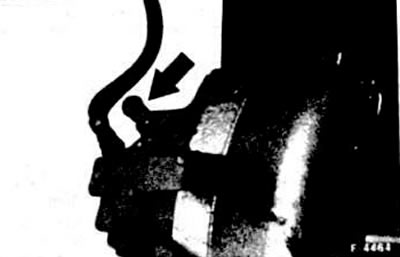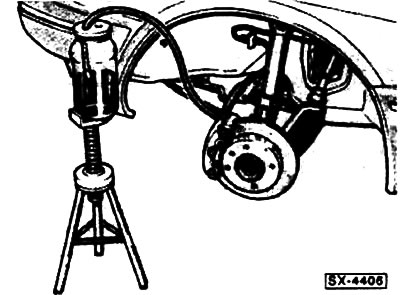
Remove the expansion tank cap and set it aside.

Remove the dust cap from the bleed screw. Clean the bolt and put a clean hose on the bolt head, lower the other end of the hose into a transparent container half filled with brake fluid. On older vehicles, first check the ease of unscrewing the bolt.

Install a container with brake fluid at least 30 cm above the bleed bolt. This prevents air from entering the brake cylinder along the bolt thread.
One person often presses the brake pedal, "pumps up" until pressure builds up in the brake system. There is increasing resistance on the brake pedal.
When sufficient pressure is built up, keep the pedal depressed.
Loosen the air bleed bolt a little, half a turn, with a spanner wrench. The liquid will flow into the vessel. Make sure that the end of the hose is constantly in the vessel in the brake fluid.
As soon as the liquid flows out, immediately wrap the bolt.
Repeat the pumping process.
Repeat the process in a separate cylinder until no more air bubbles come out of the hose.
Finally, carefully tighten the bleed bolt with the brake pedal depressed to a torque of no more than 10 Nm.
Remove the hose from the bolt head and put the dust cap on the valve.
Bleed the other wheel cylinders in the same way.
Attention! When bleeding the brakes, keep an eye on the level of brake fluid in the expansion tank. The liquid level must not fall too low, otherwise air will enter the hydraulic system through the expansion tank. Top up with new brake fluid only!
If necessary, add brake fluid up to the mark "MAX".
Attention! The fluid level must not be above the mark "MAX" with the cap on the expansion tank closed.
Screw on the tank lid.
Attention, carry out security checks:
- Is the brake hose fastener tight?
- Is the brake hose secured in the holder?
- Is the bleeder bolt tight?
- Is the level of brake fluid in the expansion tank sufficient?
Check the tightness with the engine running. To do this, press the brake pedal with a force of 200-300 N (20-30 kg) and hold it for about 10 seconds. The pedal must not fall. Check the tightness of all connections.
Finally, take a few stops on a street with little traffic.
Visitor comments